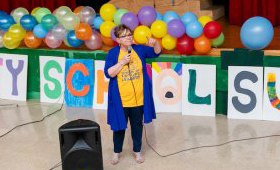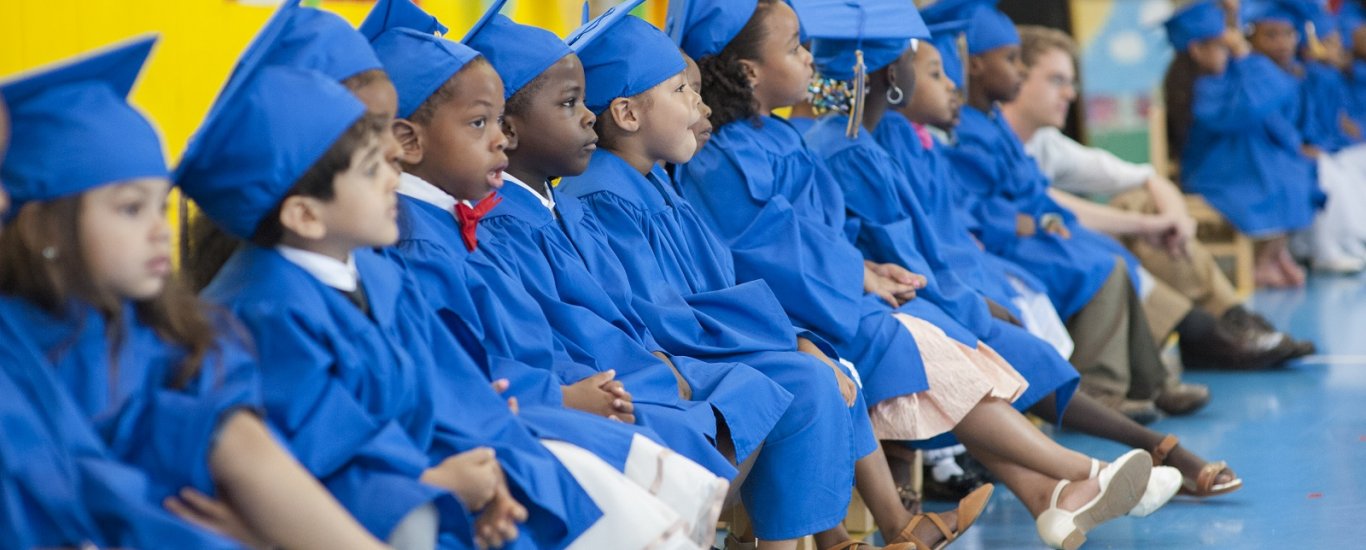Despite funding uncertainty and a global pandemic, Children’s Aid’s five-year project to make teen pregnancy prevention in the Bronx a community-wide effort achieved significant success. More than 900 youth participated in the project, and a recent report demonstrates a 65% increase in knowledge of sexuality, reproduction, and healthy relationships among participants.
The Teen Pregnancy Prevention Project (TPP) developed a network of community partners in the Bronx communities of Morrisania, Claremont, and Crotona Park East. Crucially, it included Bronx young people in decision-making and gave them opportunities for authentic participation.
“At Children’s Aid, we knock down the barriers that poverty and systemic racism put between young people and their full potential – and that includes becoming parents before they’re ready,” said Phoebe Boyer, president and CEO of Children’s Aid. “We know that helping youth thrive means addressing the whole person, so we designed a program to help young people build self-esteem and decision-making skills, while supporting their future goals through preparation for college and careers.”
In 2011-2013, as Children’s Aid began planning for this project, the pregnancy rate for teens aged 15-19 in these neighborhoods, located within the poorest Congressional district in the U.S., was 43.1 per 1,000. With 35.2 births per 1,000 adolescent females, it had the third-highest teen birth rate across 59 NYC community districts; and far surpassed the current national average (26.6).
The multi-pronged TPP strategy centered around sexual health education programs delivered in schools, community centers, and foster care agencies that, over time, improved knowledge; increased use of condoms and other methods of contraception among those who are sexually active; facilitated reproductive and other health care; and ultimately reduced rates of teen pregnancy.
Teen pregnancy and birth rates have been declining across the country since the peak year 1991. In New York State, the teen birth rate declined 75% between 1991 and 2019.1
In the third year of this five-year program, funding from the U.S. Department of Health and Human Services was terminated to all TPP projects over political objections. It was restored after a protracted legal process, but a lost year had a measurable impact nonetheless.
“May is Sex Ed for All month, which exists to raise awareness about the need for evidence-based reproductive health education,” said Pascale Saintonge, director of family planning and pregnancy prevention programs at Children’s Aid. “This May lets also remind ourselves of the importance of engaging youth directly in the building and execution of our education models. This report’s most important recommendation is that intentional involvement of all members of the community – youth, parents, and peers – will ensure the greatest impact over time.”
For additional information about the report, contact Anthony Ramos at (212) 949-4938 or anthonyr@ChildrensAidNYC.org, or David Gardner at (646) 634-3027 or dgardner@childrensaidnyc.org.
###
For more than 165 years, Children’s Aid has been committed to ensuring that there are no boundaries to the aspirations of young people, no limits to their potential. We know what it takes to ensure children and youth grow up strong and healthy, and ready to thrive in school and life: excellent education and health care, social-emotional support, and strong stable families. Today, we serve nearly 50,000 children, youth, and their families at more than 40 sites in four under-resourced neighborhoods in New York City.



